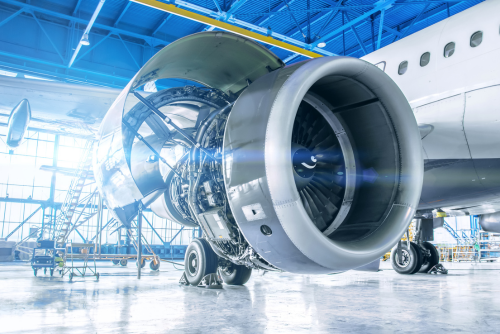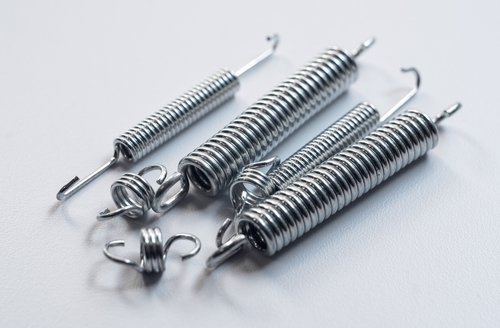
Keeping weight to a minimum is essential for aerospace spring manufacturing. Even for small components such as springs, weight considerations can add up, ultimately impacting the safety and fuel efficiency of an aircraft.
Despite the need to restrict weight, however, spring components must maintain optimal performance and reliability. Finding a solution that balances both functionality and weight can be difficult, but choosing a spring manufacturer with custom spring design and manufacturing expertise is often the first step to sourcing an effective solution.
WEIGHT CONSIDERATIONS IN AEROSPACE DESIGN
Weight restriction, and the proper distribution of weight, play an important part in aeroplane design. Every aircraft will have a centre of gravity around which weight should be carefully distributed. Load your plane incorrectly and it can affect the fuel efficiency, speed and manoeuvrability of the aircraft.
With these restrictions in mind, most aerospace engineers will seek to adhere to strict weight and balance data, constantly looking for ways to minimise weight without compromising on strength or performance. As an essential component in many aerospace applications, the humble spring is no exception. As such, the quest for weight reduction impacts spring design in several ways.
MATERIAL SELECTION
The first step towards weight reduction is to choose a lightweight yet durable spring material to minimize the overall weight of the aircraft. Each material will have properties that affect its suitability, and it is important to consider factors such as density, elasticity, and fatigue resistance in relation to the demands of the application.
Titanium and high-strength alloys are often employed in aerospace springs due to their excellent strength-to-weight ratio, however, switching to a lightweight material can present its own challenges.
For example, you may require more material to create a spring that delivers the same pressure, creating less space for other design elements. Furthermore, aerospace springs may require some form of coating to improve corrosion resistance.
Finally, depending on where the aviation product is based any new assembly may need to pass national and international standards. For example in the US you may require crash testing under G-force conditions in order to achieve Federal Aviation Administration (FAA) approval, or to be certified compliant with DoD or NASA guidelines.
Look for a spring manufacturer with a thorough understanding of relevant aerospace standards including specific certifications to help you navigate the approvals process.
SPRING GEOMETRY
The geometry of your spring is another crucial factor in adhering to weight restrictions, yet the kind of spring you choose will depend on your application.
Across a single aircraft, there will be hundreds of different springs in diverse applications ranging from rugged landing gear and fuel systems to overhead cabins and retractable meal trays. Some will be safety critical, while others will be non-flight critical, contributing instead to customer comfort through quality seat control for instance.
To meet these diverse requirements, multiple different spring types are required including compression, extension and torsion components. In each case, spring dimensions must be fine-tuned to strike a balance between strength and weight.
STRESS ANALYSIS
For optimum functionality and to keep on top of exacting aerospace standards, it may be necessary to evaluate the stress and strain that a spring will undergo under applied loads. This could be operational strain or even stress caused by extreme conditions.
Corrosion resistance is a common cause of damage in aerospace applications with some springs subject to chemicals and moisture during flight operations, as well as significant temperature fluctuation and excessive vibration.
To ensure that a spring will function over the entire lifespan of the aircraft, stress analysis techniques such as finite element analysis (FEA) use models and simulations to predict how a spring might behave under different physical conditions.
Using this additional data on efficiency and performance, makes it possible to optimise spring geometry while simultaneously working to ensure compliance with stringent weight restrictions.

CUSTOM MADE SPRINGS: AN EFFECTIVE SOLUTION FOR AEROSPACE SPRING MANUFACTURERS
Every aerospace application requires trade-offs in the search for the perfect spring component – balancing cost, reliability, and performance against weight restrictions.
In some cases, the best solution will be to specify a bespoke spring design, using innovative manufacturing processes to enhance weight efficiency during production. Collaborating with a specialist spring manufacturer, such as SCS, provides access to a variety of expert fabrication techniques including:
- Coiling
- Forming
- Welding
- Polishing
- Cleaning
- Coating
This can help to ensure precise specifications that ultimately contribute to your overall weight reduction strategy.
When combined with sophisticated testing and rapid prototyping, this might, for example, help to develop a lightweight custom spring that contributes to increased fuel efficiency and reduced aircraft operating costs; an increased payload; or further manoeuvrability and control during take off and landing.
With over 40 years’ experience in custom spring design and fabrication, our collaborative approach can help you meet stringent aerospace requirements to create lighter, safer, more efficient aircraft.
Contact our expert engineering team to find out how we could reduce weight and improve reliability in your next aerospace project.


